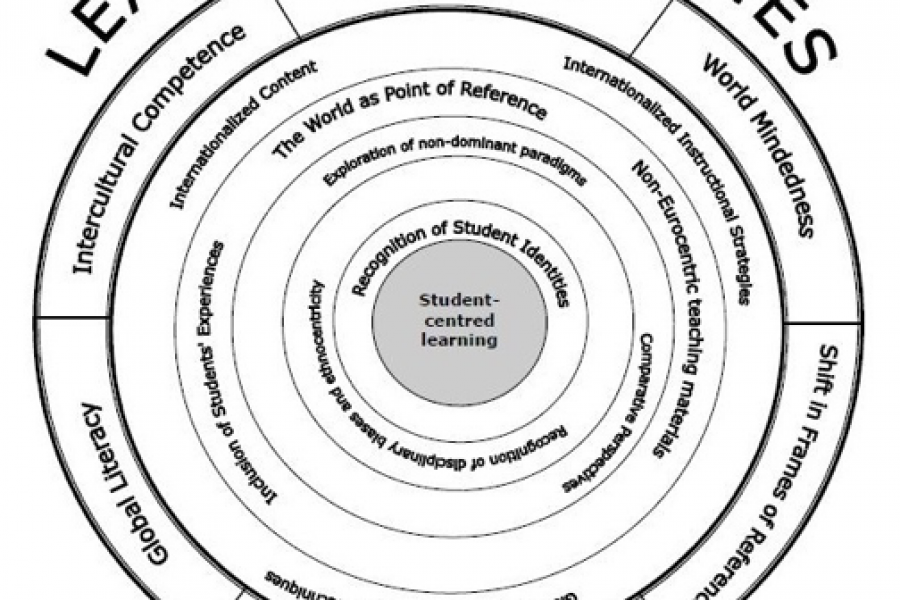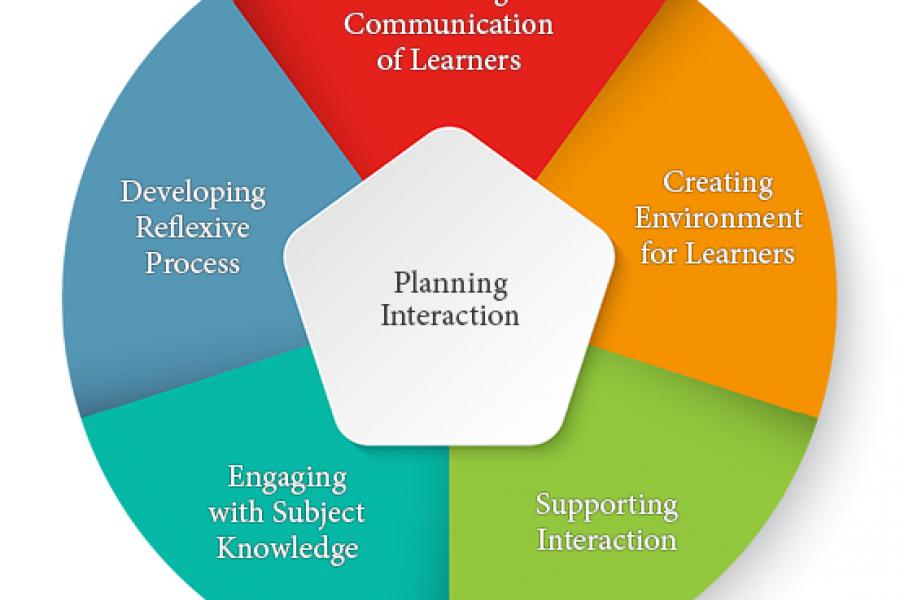Internationalization core principles
Planning Interaction
Planning is the first important step in fostering engagement among students from diverse cultural backgrounds. Without such a purposeful approach, students will tend to form culturally similar groups. Instructors need to develop clear guidance for students about the objectives of peer engagement, expected learning outcomes and assessment processes8.
Formalizing peer interaction within academic courses can be achieved in a number of ways8(p11):
- Incorporating interaction among students from diverse backgrounds as a course objective and making this explicit in published course outlines;
- Designing and structuring teaching and learning activities that require students to communicate and engage with peers from diverse backgrounds; and
- Designing assessment tasks that align with the objective of student interaction and peer engagement. For example, these tasks may require students to work with peers from different backgrounds in order to consider or compare different perspectives on an issue or topic, and then to critically reflect on the group process
Creating Environments for Interaction
Both international and domestic students generally feel more comfortable interacting with peers that share similarities15. Therefore, instructors need to move students out of their cultural comfort zones to help them develop confidence in interacting with others from diverse cultural and linguistic backgrounds.
In creating learning environments conducive to interaction, it is important to8(p12):
- Initiate interactive teaching and learning activities at the early stage of a course to help to create a learning environment where peer interaction is valued by students
- ‘Start as you mean to continue’, with conditions for effective interaction created from the outset
- Purposefully generating situations, within learning and teaching activities, that require students to interact
- Actively encourage students to move out of their regular social groups
- Support students to develop the confidence in interacting with other peers from diverse cultural and linguistic backgrounds
Supporting Interaction
Many students, despite their background, do not fully understand the potential benefits that come through interacting with peers from different cultural and linguistic backgrounds. For example, one of the benefits is that students will be able to develop an ability to view the world from multiple perspectives, attain knowledge of global interconnections, and foster a desire to address local and global issues through critical thinking and problem solving16.
Instructors can describe the benefits in the context of the particular learning objectives of the course and acknowledge the various areas of interest and aspirations among the group. Equally important, students need to develop skills to work effectively with diverse peers8.
Here is some more details of what instructors can do8(p14,40):
- Set clear expectations about peer interaction;
- Incorporate a session dedicated to peer learning;
- Respect and acknowledge diverse perspectives;
- Assist students to develop rules regarding interaction within their group;
- Inform students about how engagement with diverse learning will assist their learning;
- Incorporate a session dedicated to peer learning;
- Provide group-work resources for students.
Engaging with Subject Knowledge
The main purpose of this dimension is to encourage students’ engagement with the subject content through peer learning activities and to create a mutually respectful atmosphere, a sense of shared purpose and opportunities for collaboration8.
Activities designed to provide these kinds of collaborative learning opportunities include but are not limited to8(p15-16):
- Discussion-based activities requiring students to discuss an issue, analyze a case study, present an argument and/or provide examples from their own experiences;
- Problem-solving activities requiring students to pool their knowledge and work through a problem or set of questions;
- Group projects requiring diverse perspectives and a range of skills; and
- Practical activities requiring students to apply technical/practical skills (e.g. conducting a chemistry experiment, constructing a model, giving a presentation, preparing an artistic performance, etc.).
Developing Reflexive Processes
Students will confront differences in each other’s understanding, attitudes or perspectives in peer interaction for learning. Instructors can expose students to alternative perceptions and conflicting views to motivate them for further discussion.
Through explaining and defending their views to others, conflicts can be reconciled, and students arrive at “negotiated meanings”17 (p37). In addition, peer learning is enriched when learners take steps back and reflect on the learning process.
Some key strategies that instructors can use to encourage students to critically reflect on their work8 (p18-19, 41-42):
- Using questions as triggers for reflection;
- Using reflective written tasks;
- Analyzing and synthesizing ideas to prepare feedback for peers;
- Offering constructive feedback that supported student learning; and
- Reflecting on their own knowledge and perspectives.
Fostering Communities of Learners
The goal of intercultural interaction is to encourage the formation of a learning community in which students support each other, share knowledge and practice together18.
Examples from practice8 (p20):
- Initiatives specifically designed to build learning communities
- Online collaborative tools
- Peer mentoring programs



